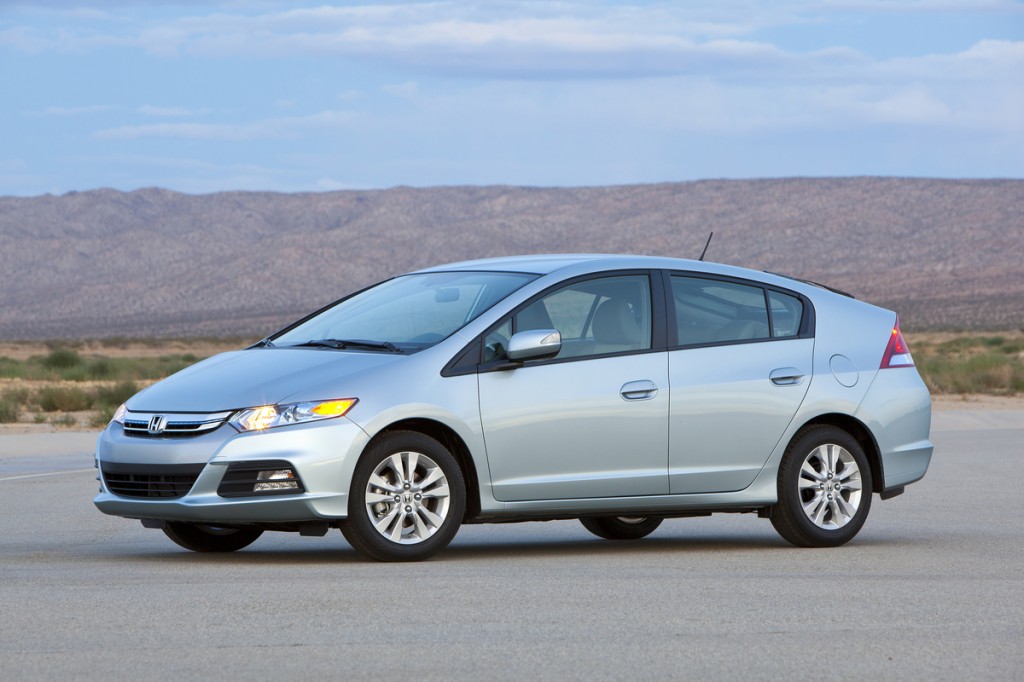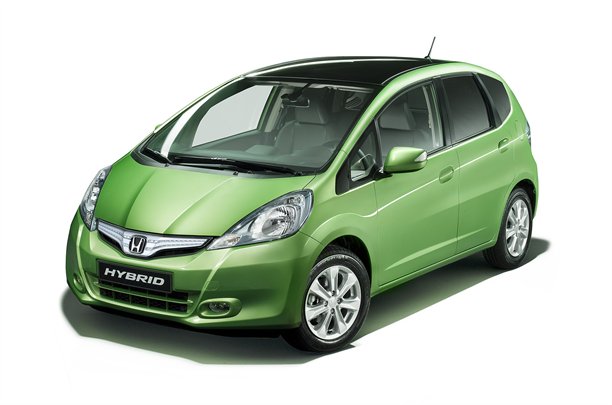Both Toyota and Honda are hybrid pioneers.
Both companies sell subcompact gasoline models (the Toyota Yaris and the Honda Fit) and separate subcompact hybrid models (the Toyota Prius C and Honda Insight).
What most U.S. buyers don't know is that those companies also sell hybrid versions of the Yaris and Fit. They sell well in Japan--but the companies have no intention of bringing them to the States.
Why? According to a Toyota executive who asked to remain anonymous, it has to do with the differences between how drivers in the U.S. and the rest of the world travel, and small-car aerodynamics.
While this is one man's unconfirmed account, it explains a question that had always puzzled us. Here's what he said.
More high-speed highway
In short, European and Japanese buyers not only travel shorter distances in their cars, they do so at slower speeds. With older cities and relatively less U.S.-style suburban sprawl, those drivers spend more time in stop-and-go traffic--and a lot less time on the highway.

2012 Toyota Yaris Hybrid
In the U.S., we think nothing of hopping in our cars to travel 100 miles or more. Elsewhere, gasoline is double the price, and mass transit is an accepted alternative--often even the default.
Trains and buses are clean, comfortable, frequent, and quick. They're used by all segments of society. And the price against the cost of gasoline and tolls is a much better match than in the States.
Aerodynamic drag counts
That means that highway fuel efficiency weighs less on the mind of many non-U.S. buyers than does city fuel economy. That's where aerodynamics comes in.
Both the Honda Insight and the Toyota Prius C have lower drag coefficients than the Fit Hybrid and Yaris Hybrid, respectively. That puts less strain on their smaller, less powerful gasoline engines at highway speeds--improving gas mileage.
According to our Toyota source, in real-world use, the Yaris Hybrid would have delivered unacceptably low highway mileage for U.S. buyers.
(The gas mileage of the all-new 2012 Yaris is only average, mind you.)

2012 Honda Insight EX with Navigation
As it is, the 2012 Toyota Prius C hybrid subcompact gets 53 mpg city, but only 47 mpg highway.
Not only does it have a smaller engine, but it's less aerodynamic than the longer Toyota Prius liftback model--which is taller, heavier, more powerful, and more spacious, but gets the same combined 50-mpg rating.
It's particularly hard to make short cars aerodynamically efficient. The ideal aero shape is a teardrop, and if you chop too much off the tail of the tear, you increase drag.
Brand-new cars vs hybrid options
In other words, both Honda and Toyota incurred the extra expense of developing a brand-new dedicated hybrid vehicle (using elements of their existing subcompact platforms) largely to deliver the right balance of gas-mileage figures.
Has it worked?

Honda Fit Hybrid
In Honda's case, arguably not. The gasoline Honda Fit, now several years into its model run, is still one of the better subcompacts, with unparalleled interior versatility.
And despite a mild refresh for the 2012 Insight, sales of Honda's smallest hybrid model have been far below projections.
The 2012 Toyota Prius C, however, is off to a successful start globally, with strong sales in the U.S., in Japan, and around the world.
Here, it has both the strength of the Prius name and, with its battery under the rear seat, a full-size rear load bay--unlike the Insight, which has its battery under the load deck.
Which do you prefer?
In fact, the Prius family has become the third best-selling car line in the world this year.
So if you like the looks of the Yaris more than the Prius C ... too bad. If you want a subcompact hybrid from Toyota, it's the Prius C or nothing.
What do you think? Would you prefer a Yaris Hybrid to a Prius C, or a Honda Fit Hybrid over an Insight?
Leave us your thoughts in the Comments below.
+++++++++++













